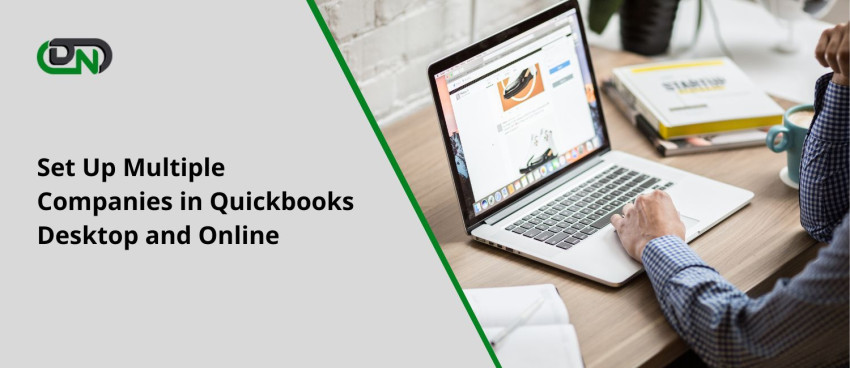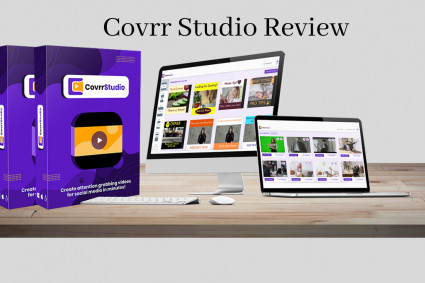
Introduction
Welcome to our blog post on setting up multiple companies in QuickBooks Desktop and Online! If you're a business owner or accountant managing multiple entities, this article is for you. We'll guide you through the process of efficiently organizing your financial data using QuickBooks, whether it's the online version or the desktop software.
Managing various businesses can be challenging, but with the right tools and strategies in place, it becomes a breeze. QuickBooks allows you to set up separate company files for each entity, making it easier to track income and expenses individually. So, let's dive into the world of multi-company accounting with QuickBooks Online and Desktop!
Setting up QuickBooks Online
When it comes to managing multiple companies, QuickBooks Online is a versatile and user-friendly option. With its cloud-based platform, you can easily access your company data from anywhere, making it ideal for businesses with multiple locations or remote teams.
To set up QuickBooks Online Multiple Companies, start by logging into your account and navigating to the "Settings" menu. From there, select "Manage Users" and click on the "Add User" button. This will allow you to create a separate login for each of your companies.
Next, go back to the main dashboard and click on the gear icon in the upper right corner. Choose "Company Settings," then select "Advanced." Here you can enable multi-company mode by checking the box next to "Use multi-company features."
Once this feature is enabled, you'll be able to switch between different company files within QuickBooks Online by clicking on your company name in the top left corner. This makes it easy to keep track of finances for all of your businesses without having to log out and log back in.
Setting up multiple companies in QuickBooks Online may require some initial setup time but once done properly, it will streamline your accounting processes across all of your business ventures. So, take advantage of this powerful tool and get started today!
Setting up QuickBooks Desktop
Setting up QuickBooks Desktop is a straightforward process that allows you to efficiently manage your financial information for multiple companies. Here's how you can do it:
First, open QuickBooks Desktop and click on the "File" menu. From there, select "New Company" to start setting up a new company file.
Next, you'll need to provide some basic information about your company, such as its name and address. You can also customize settings like fiscal year and tax form frequency according to your business requirements.
After entering the necessary details, choose a template that best suits your industry or create a custom one from scratch. This will help organize your accounts and make it easier to track income and expenses specific to your business type.
Once done with the initial setup, you can begin adding additional users who will have access to the company file. Assigning different roles and permissions ensures that each user has appropriate access levels.
To streamline data entry further, import existing data into QuickBooks from other sources such as Excel spreadsheets or previous accounting software.
Remember to set up bank feeds so that transactions automatically sync with QuickBooks Desktop for accurate record-keeping.
By following these steps, you'll be able to effectively manage multiple companies within QuickBooks Desktop without any hassle!
Company Preferences
Company Preferences in QuickBooks Desktop and Online play a crucial role in customizing the software according to your business needs. By setting up company preferences, you can streamline your accounting processes and ensure accurate financial reporting.
In QuickBooks Desktop, you can access Company Preferences by going to the Edit menu and selecting Preferences. From there, you can customize various settings such as General, Accounting, Finance Charge, Sales & Customers, Purchases & Vendors, Payroll & Employees, and more.
In QuickBooks Online, click on the Gear icon located at the top right corner of the screen and select Account and Settings. Here you will find different categories like Company tab where you can set your fiscal year start date or enable account numbers for better organization.
Within each category of preferences in both versions of QuickBooks, there are numerous options available that allow you to tailor the software to meet your specific requirements. For example, you can choose how dates are displayed or set default accounts for various transactions.
By taking advantage of these customization options offered by Company Preferences in QuickBooks Desktop and Online, businesses can optimize their accounting workflows and improve overall efficiency. So, take some time to explore these settings and make sure they align with your business goals!
Conclusion
In this article, we have explored how to set up multiple companies in QuickBooks Desktop and Online. We started by discussing the steps to set up QuickBooks Online, which involved creating a new company file and customizing settings to meet your specific needs. By following these instructions, you can easily manage multiple companies within the same QuickBooks Online account.
Next, we moved on to setting up QuickBooks Desktop for multiple companies. This process involved installing the software and creating separate company files for each entity. We also discussed how to switch between different company files within QuickBooks Desktop.
Additionally, we touched upon important considerations such as managing user access across multiple companies and ensuring data security. It is crucial to establish appropriate user roles and permissions to maintain confidentiality and control over financial information.
Moreover, we highlighted the significance of establishing accurate company preferences in both QuickBooks Desktop and Online. By tailoring settings such as default accounts, invoice templates, payment terms, and tax options for each individual company file or online account, you can streamline your accounting processes while maintaining consistency across all entities.
Setting up multiple companies in QuickBooks Desktop and Online allows businesses with varied operations or branches to effectively manage their finances under one platform. Whether you choose the flexibility of cloud-based accounting with QuickBooks Online or prefer the robust features of desktop software with QuickBooks Desktop's multi-company capability is entirely dependent on your business requirements.
With these step-by-step instructions at hand along with an understanding of best practices for managing multiple entities in both versions of QuickBooks software, you are now equipped with the knowledge needed to successfully set up multiple companies in either platform.
Remember that selecting an accounting solution that aligns with your business needs is essential for efficient financial management across all your ventures.




